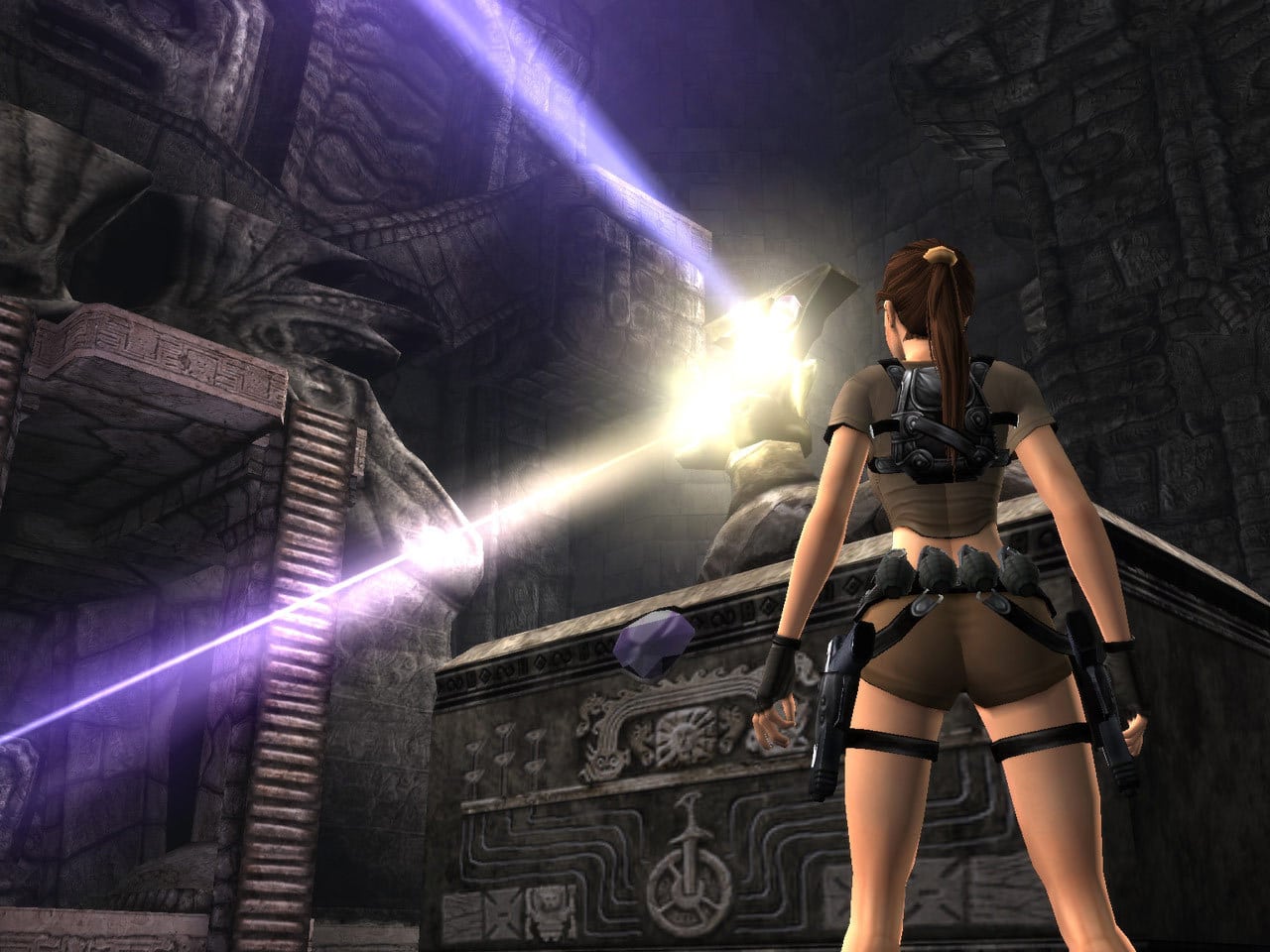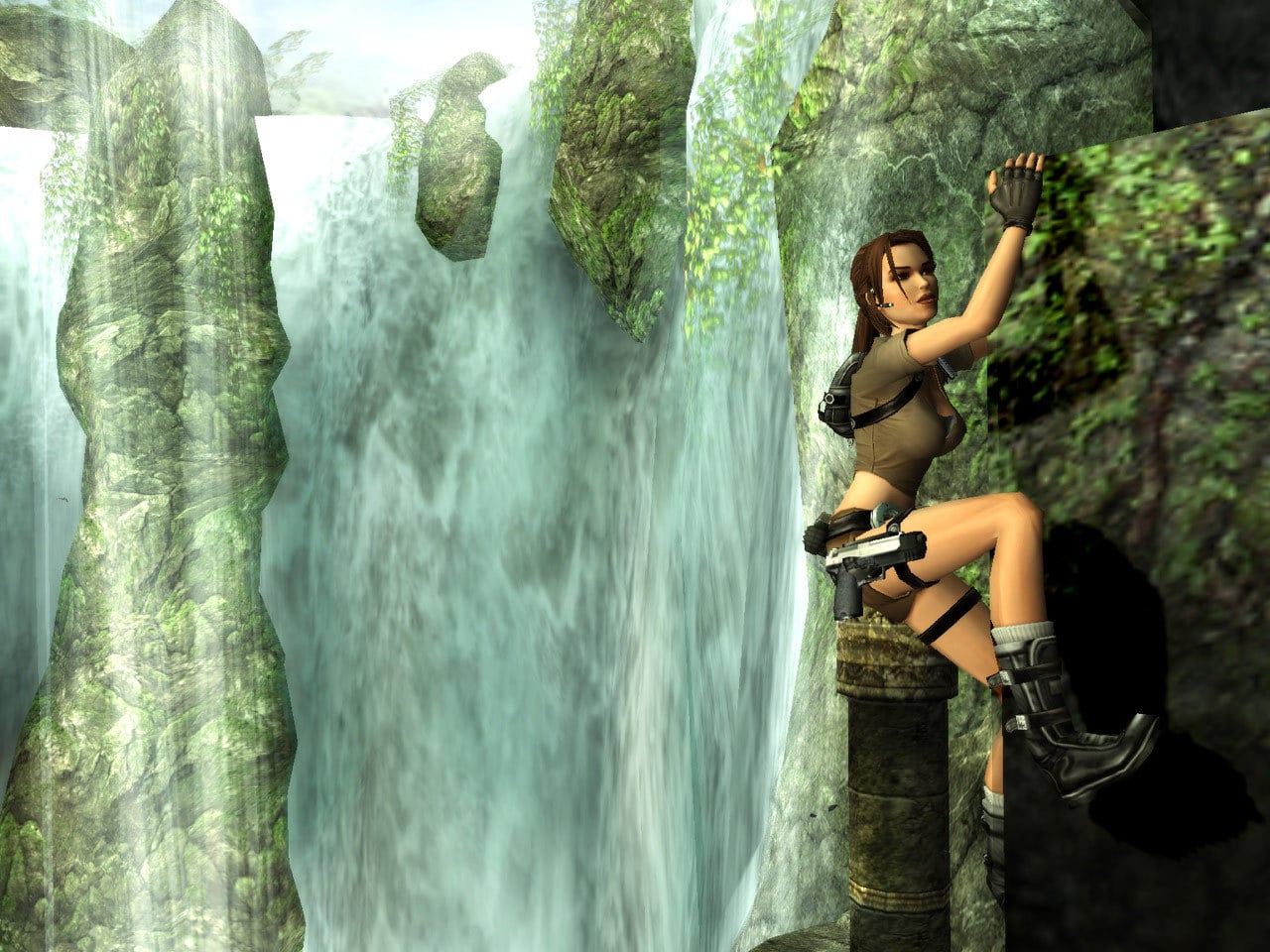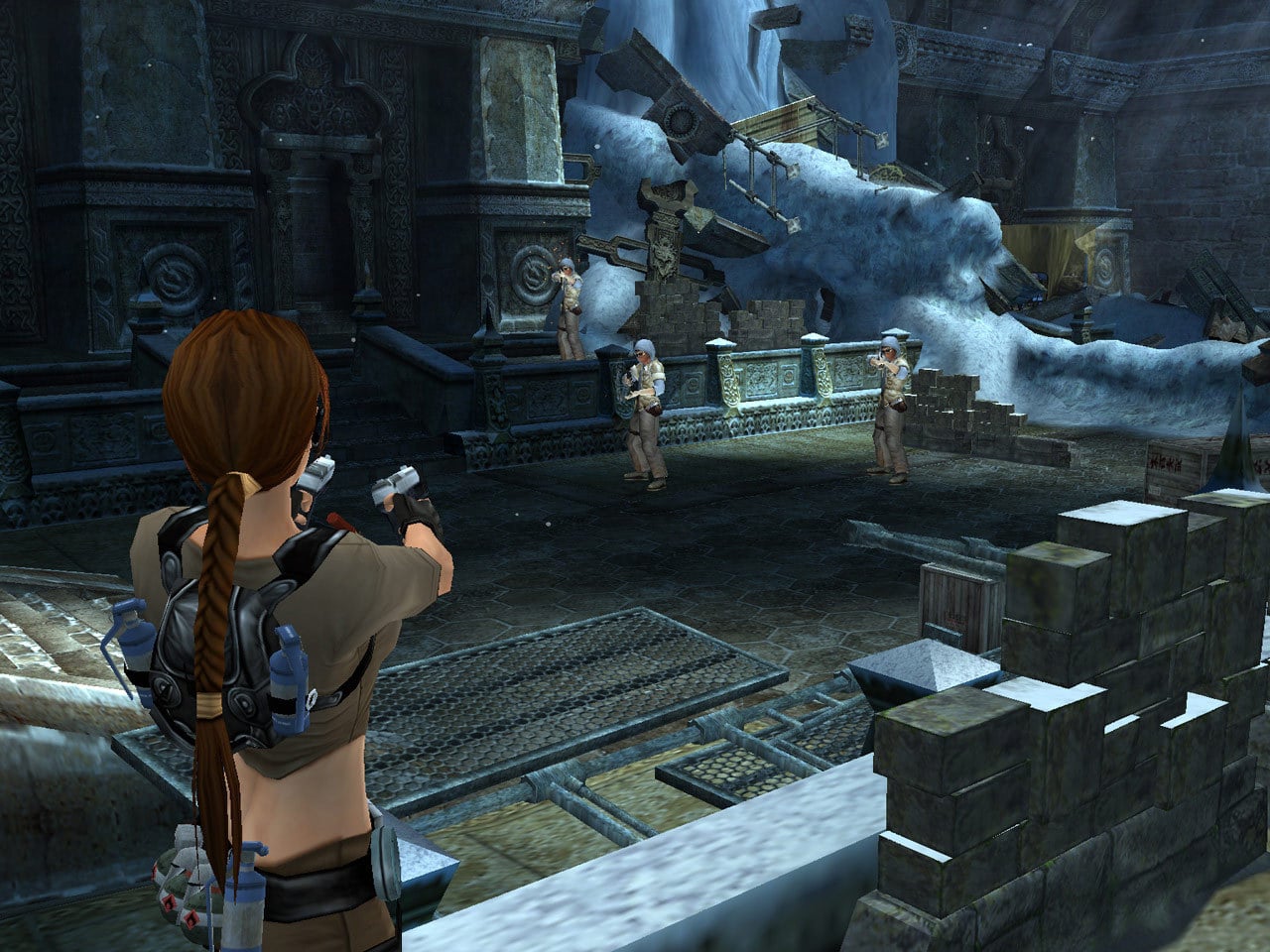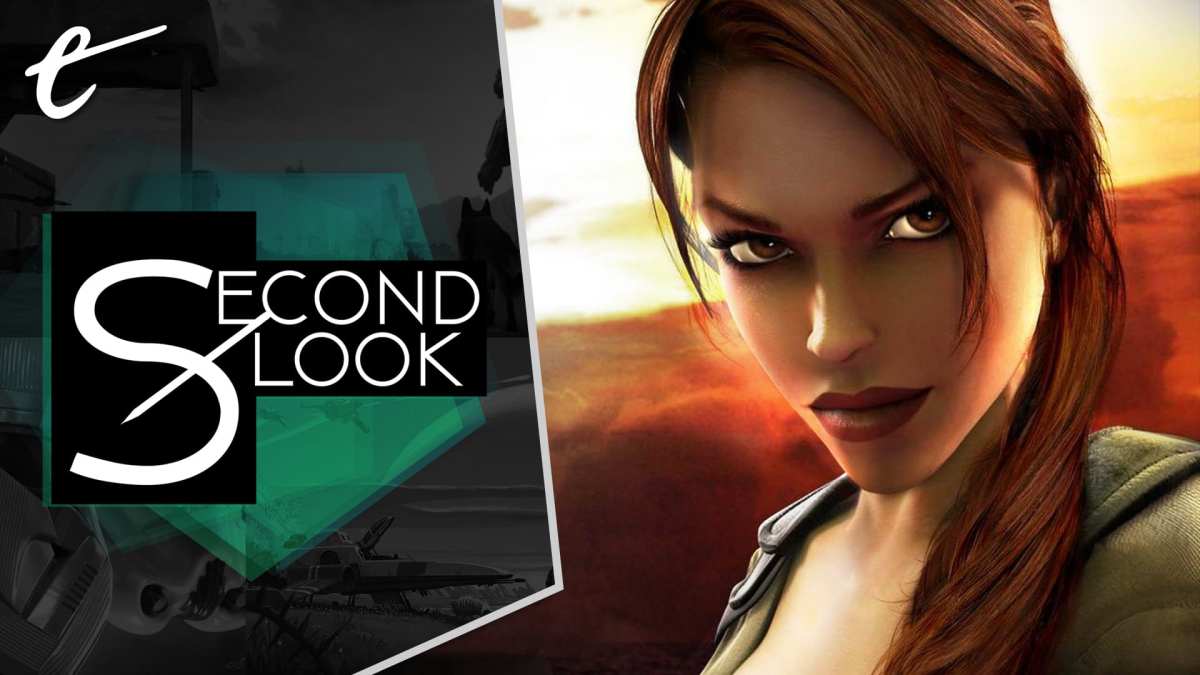Starting over isn’t easy, especially after a colossal misfire like Tomb Raider: The Angel of Darkness. Yet in a rare turn of events, Crystal Dynamics has had two opportunities to re-envision Core Design’s famous adventure heroine. Though the Survivor trilogy gets the majority of the limelight these days, I gotta be honest — Crystal Dynamics has yet to top its first series reboot with the Tomb Raider: Legend trilogy.
And what a trilogy it is! You’ve got two wholly original entries and an integrated remake of the original Tomb Raider adventure, all telling one cohesive, memorable story from start to finish. It’s a pitch-perfect reimagining of series staples while modernizing them for their present times. A Lara who is equally more feminist-minded without sacrificing her sass and charm. Though 2006’s Legend shows its age in terms of scale and fidelity, it’s the purest follow-up possible to classic Tomb Raider.
Legend doesn’t waste time getting started. Whereas the tragedy of Lara’s friends on Yamatai in the 2013 reboot unfolds across the entire game that’s double the length of its predecessor, Legend’s equivalent story beat occurs across a single level.
Young Lara, sporting her classic explorer outfit, is naive and eager to explore without thinking of bringing a gun to a tomb. She learns the hard way that the old world may be dead, but that doesn’t mean it’s without dangers. Flashbacks to an even younger Lara at the start of the game layer on why she fearlessly strives to uncover ancient secrets. Her mother presumably died as a result of Lara uncovering an artifact after they survived a plane crash. Her mother isn’t some anonymous figure alluded to, but someone immediately sympathetic and caring, trying desperately to protect her daughter while never sheltering her.

In Tomb Raider: Legend, rather than fortune or glory, Lara is seeking knowledge to uncover the truth for her own peace of mind. In a way, it’s a bit like she’s finally putting her mother to rest. Though her motivations are inwardly focused, we can empathize in those moments. It’s not the greatest story ever told — most adventure tales rarely are — but Lara’s quest to uncover the origins of an eldritch sword and mystical gateway is instantly engaging.
And save for a late-game weapon and some unlockables for replay value, Lara’s equipment is fully realized from the start. That means, instead of drip-feeding the player’s capabilities, Tomb Raider: Legend focuses on environmental challenges and providing options for overcoming them.
Getting into gun-fu fights straight out of John Wick across the roofs of Japanese skyscrapers contrasts massively with navigating a broken-down amusement park themed around King Arthur. The genuine tombs and other forgotten lands you navigate are distinct yet intuitive puzzle boxes. It’s never a question of if you can surpass a level, but how you plan to navigate it. Certain puzzles, particularly those involving blocks or dodgeable hazards, can be handled more than one way. More adverse elements in adventure games like underwater sections are used mercifully briefly, adding flavor rather than brutal punishment.
Combat, basic as it may be, offers several options such as secondary weapons, explosives, melee strikes, and environmental hazards you can turn to your advantage. The two motorcycle chases are the only instance the combat falters, as you really only have your pistols and the odd environmental trap to unleash on opponents. Fortunately, this is where the characters and presentation pick up the slack.

It can’t be overstated just how much more pleasant the Tomb Raider: Legend version of Lara Croft is. Yes, her physique and some camera angles are absurd — but Lara being a devil-may-care thrill seeker makes it a little easier to swallow. Like Bayonetta, Lara doesn’t feel incongruous, and pretty much every major voiced character is equally supermodel-glamorous, men and women alike. The only people who actually dress practically are the grunts who die by the dozen, emphasizing a specific self-aware internal logic.
The cast are overall fairly informed and capable as well. Lara’s friend Anaya Imanu is a civil engineer who holds her own under fire. Your tech and history support team fill Lara in on what she needs analyzed, trading jokes while the adventure rolls on, but Lara’s equally capable in her own right. Lara’s Japanese ally Toru Nishimura is a soft-spoken yet shrewd businessman. The mysterious adversary hounding Lara has relevant ties to her while challenging Lara as a woman of science against a metaphysical threat. One of the boss fights goes so far as to use an abandoned KGB research facility’s lab equipment to survive a close encounter with a demonic entity. The themes and stakes inform the gameplay.
When Anaya is being chased across Bolivia by motorists, you’re rushing to get there in time. If your connection to Zip and Alistair is cut, their absence makes the silence of a tomb all that more oppressive. Knowing Lara’s relationship with the antagonists makes each confrontation increasingly heartbreaking. It took Uncharted four games to get this cohesive with its storytelling and scenario design, and Tomb Raider: Legend nails it out of the gate.

What may be Legend’s greatest achievement though is how it earns its darker moment at the end. It’s the game’s closest equivalent to the underslung grenade launcher in the 2013 reboot, but Legend wisely saves its chaotic catharsis till the final hour. Here we see Lara’s dark side, and it works so well. It all culminates in a grand tease for what’s on the horizon with the rest of the trilogy. Though Legend’s story is over, the greater narrative begs you to keep delving further into its cavernous mysteries that linger. In a world of would-be franchise-starting media, to see this done so well in a title over a decade old is astonishing.
If you do decide to play Tomb Raider: Legend now though, do it on any platform except Windows 10. Any console or Windows 7 is fine, but with Windows 10, I had to re-verify my install before each boot, reinstall the game three times, and not run at a resolution over 1080p or the audio engine and cutscenes would break. A game this good shouldn’t be this hard to play. As far as modern gaming hardware goes, the Legend trilogy has effectively become an Xbox-exclusive series. Considering Square Enix continued the Legend timeline with canonical spin-off games and a full-length novel, one would think the publisher would see the value in making these games fully playable on modern PCs.
Regardless, if the option to play Tomb Raider: Legend is feasible, you owe it to yourself to experience it. This is Lara Croft at her purest, in a well-told pulpy adventure. It’s not a coincidence this timeline remains loved by fans yearning for a modernized yet nostalgic Tomb Raider experience. With Crystal Dynamics’ next trilogy promising to bring its Survivor timeline more in line with the classic games, maybe there’s a chance we’ll finally see them recapture this magic again. Until then, there’s always Tomb Raider: Legend.*
*Just not on Windows 10.






Published: Jun 24, 2021 11:00 am